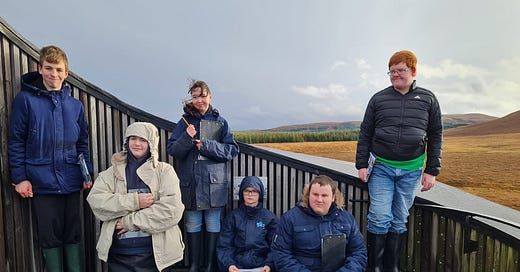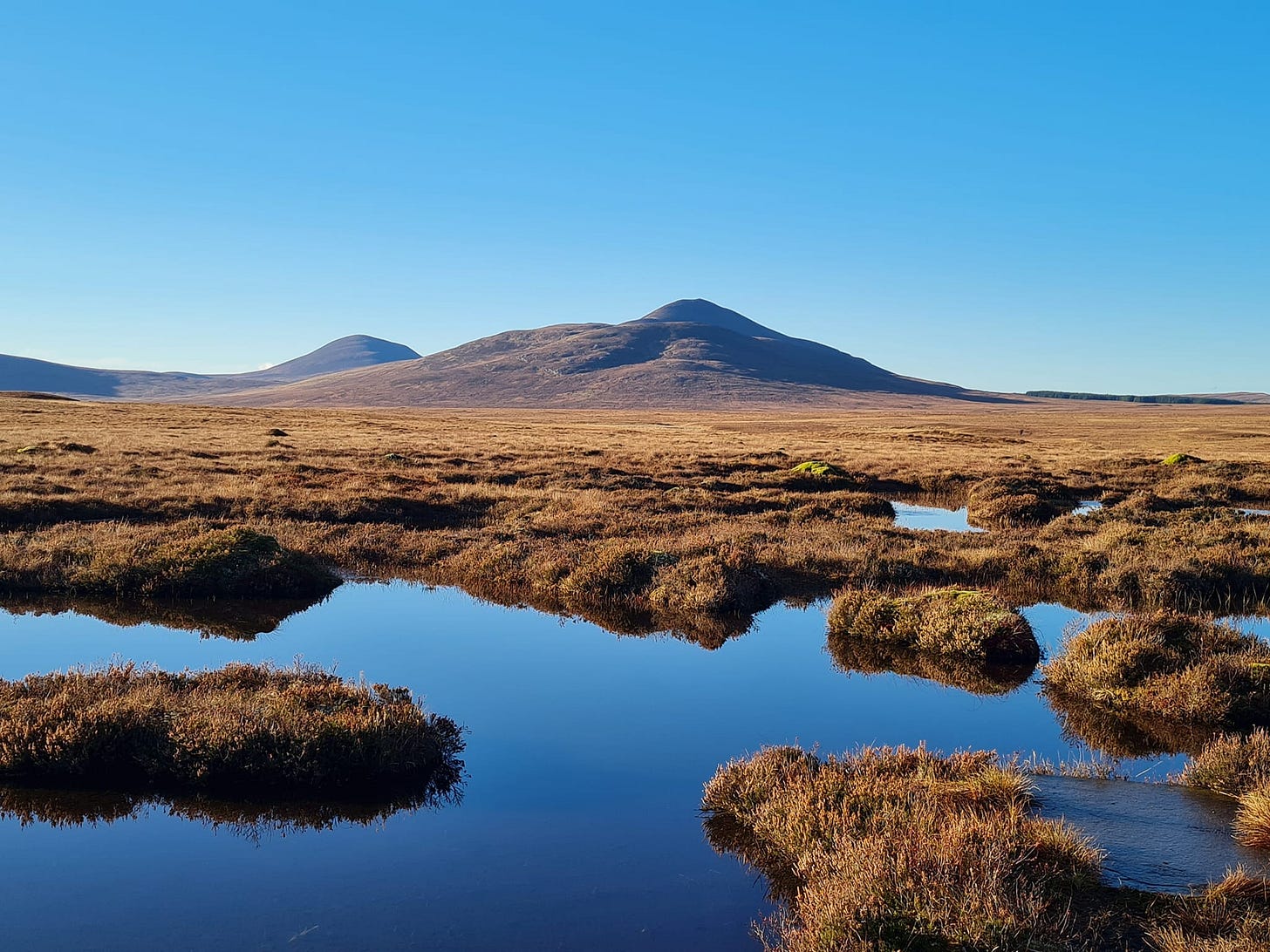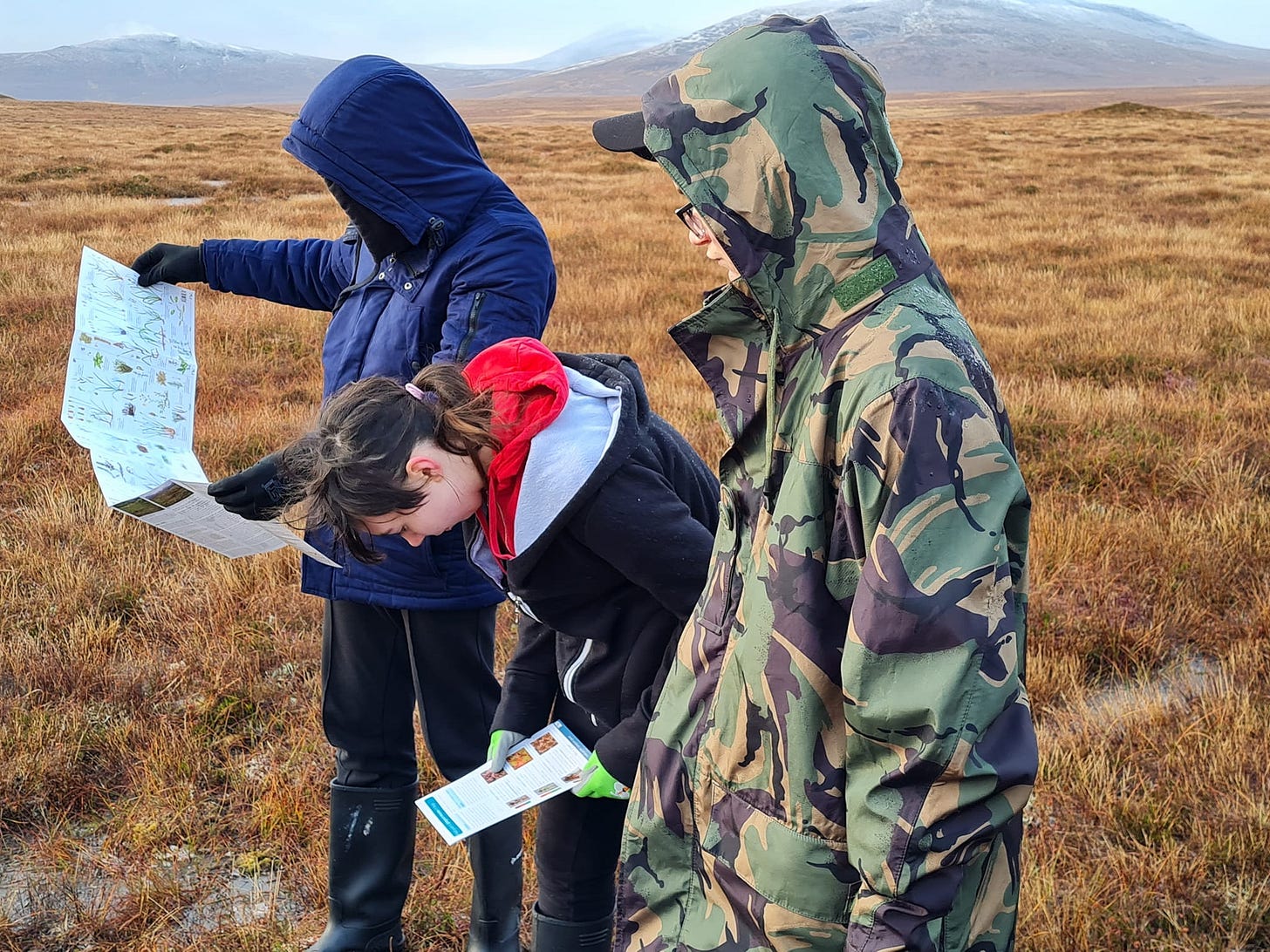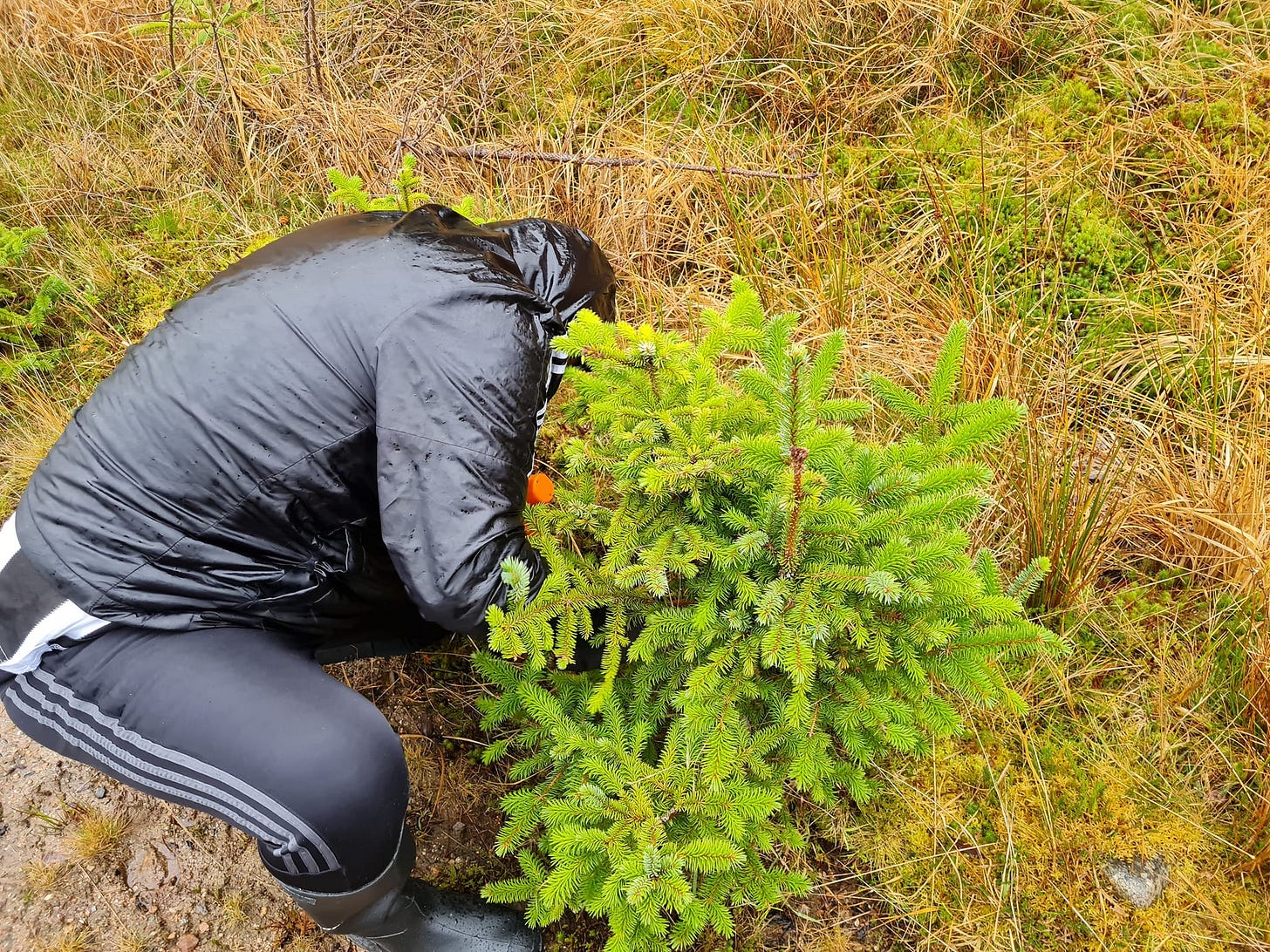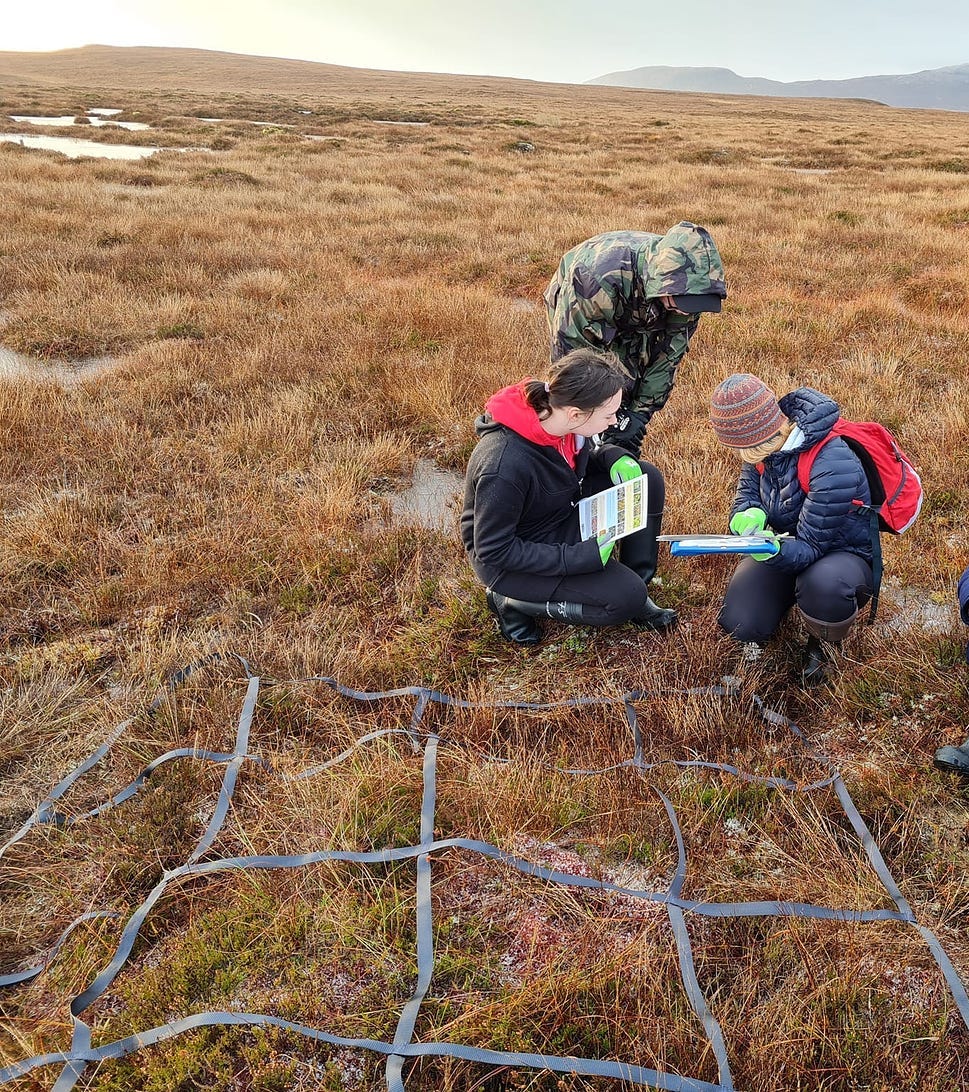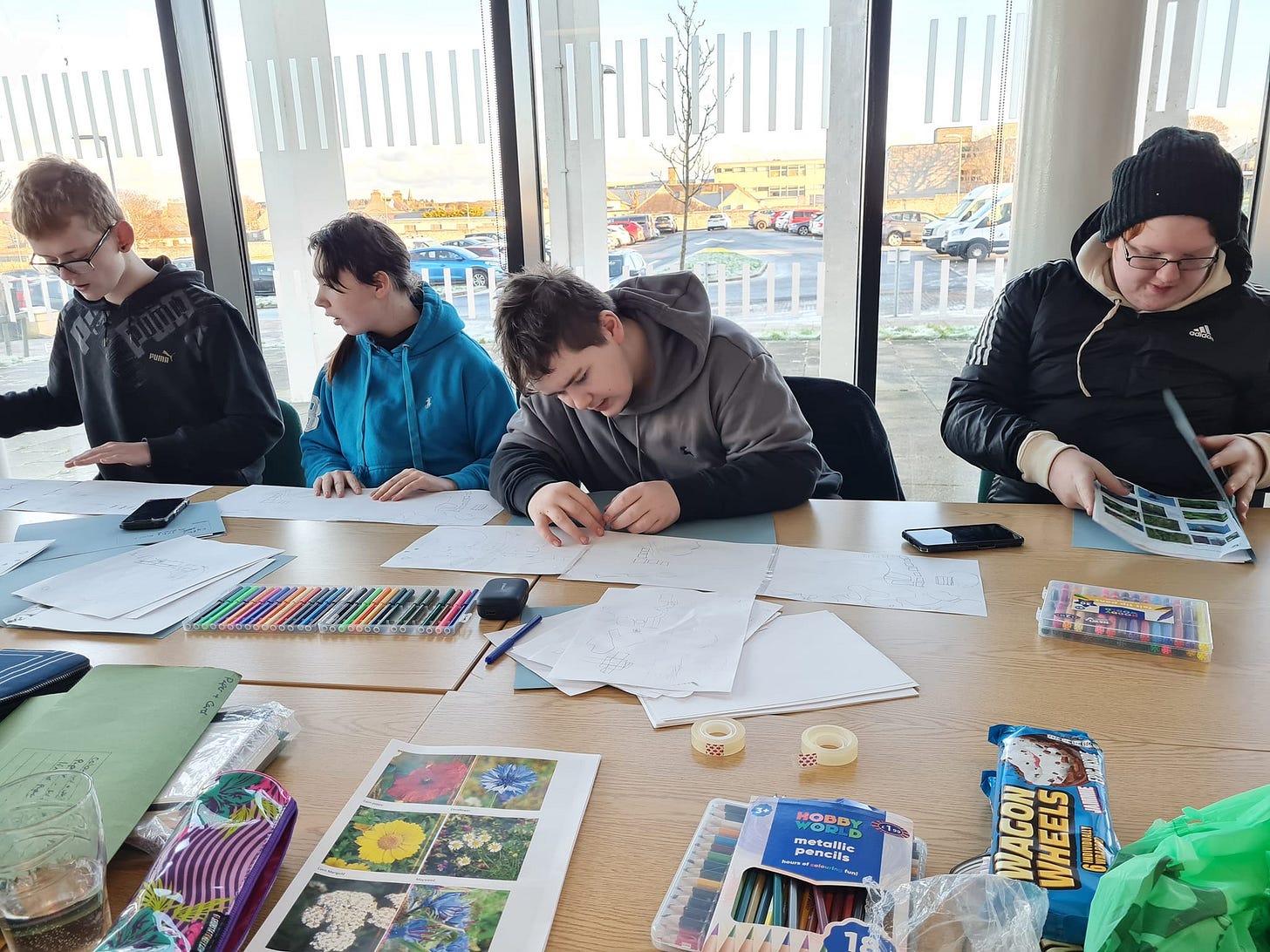Guiding the Next Generation: The Journey to Conservation Leadership
Showcasing our partnership work with the High Life Highland Youth Service
At the end of 2023, in the far north of the Scottish Highlands, a group of young individuals embarked on an enlightening journey under the guidance of High Life Highland's Youth Service. Led by Keith Moncur and Jill Innes, and in collaboration with the High Life Highland Ranger, Roz Summers and the Royal Society for the Protection of Birds(RSPB) Officer, Milly Revill-Hayward, these six young people from Wick and Thurso , set their sights on achieving the John Muir Award at the Forsinard Flows Nature Reserve. This initiative, generously supported for the second time by MFR Cash for Kids, serves as a testament to the transformative power of environmental stewardship.
Forsinard Flows, a sprawling 21,000-hectare expanse managed by the RSPB, is an example of nature's beauty and resilience. Home to a myriad of species, from the golden plover to the elusive hen harrier, and many invertebrates and amphibians, this reserve is a crucial bastion against climate change. Its vast peat bogs hold a significant carbon store and underscore the importance of Scotland’s conservation efforts in maintaining our planet's health.
Over the course of the project, the six Caithness participants engaged in a series of meticulously designed challenges that took them through the heart of conservation work in this flow country setting. Starting with the collaborative creation of a panoramic drawing from the RSPB's viewing tower, they not only captured the stunning landscape of Forsinard Flows on paper, but also laid the foundation for a journey of teamwork and shared discovery.
Exploration followed, stepping out over the bog - with map reading, compass bearings (important on days of poor visibility), and learning how to read the landscape’s nuanced features. This exploration phase deepened their connection to the land, as they navigated its terrain.
As a group, they came to understand the land better and were able to assist RSPB land managers, by learning how to use technical equipment and take accurate readings. This enabled the undertaking of scientific inquiries into the depth of areas of peat bog, tasks which were both practical and important. They considered what the area and its landmarks would have looked like 150 years ago, and what it may be like in 150 years time. Using the peat probes, they were able to calculate how deep the bogs would be if conservation work being carried out was successful.
The group spent a further couple of weeks volunteering by removing non-native trees from the bogs near the River Dyke. They undertook the physical task of removing of over 1,400 non-native saplings from this area. This was done to ensure against the inadvertent release of carbon into the atmosphere. Trees can cause bog to dry, crack and release the carbon stores back into the atmosphere. As Keith Moncur commented “Our group was literally helping to save the world”
Other hands-on conservation tasks involved preparing seed beds and the sowing of native wildflowers for pollinators to create more pollinator friendly habitat zones within the reserve, and conducting health surveys of the bog flora and fauna - in order to assess grazing pressures. These tasks gave insights into the science behind the ecology of the area, as well as facilitating an overview of what is involved in habitat restoration for these aspiring young environmental stewards.
These activities demonstrate the crucial role young people can play in the larger context of environmental conservation - moving us towards the 30 x 30 global target.
The project journey's final stage was marked by reflection and sharing, as participants compiled scrapbooks filled with photos, notes, and documentation of their work. These scrapbooks serve as a testament to their achievements and a source of inspiration for peers. They are not only collections of memories, but powerful narratives of six young individuals taking meaningful steps towards a bright future.
The receipt of the John Muir Award and HLH Green Leader Awards also marks a significant milestone, it is a recognition of the tasks they completed, the knowledge gained, the challenges overcome, and the personal growth experienced.
Projects such as these led by our teams at High Life Highland Youth Services in conjunction with our our High Life Highland Ranger Team and the RSPB, showcase the power of education and hands-on field work. HLH services work together to equip the next generation within our communties with the knowledge, experience, skills and a profound sense of connection to the natural world they will need to meet those challenges head on. Together we lay the groundwork for a future in which every individual plays a significant part in safeguarding our planet.
You can read more about the High Life Highland Youth Service in their annual report here:


